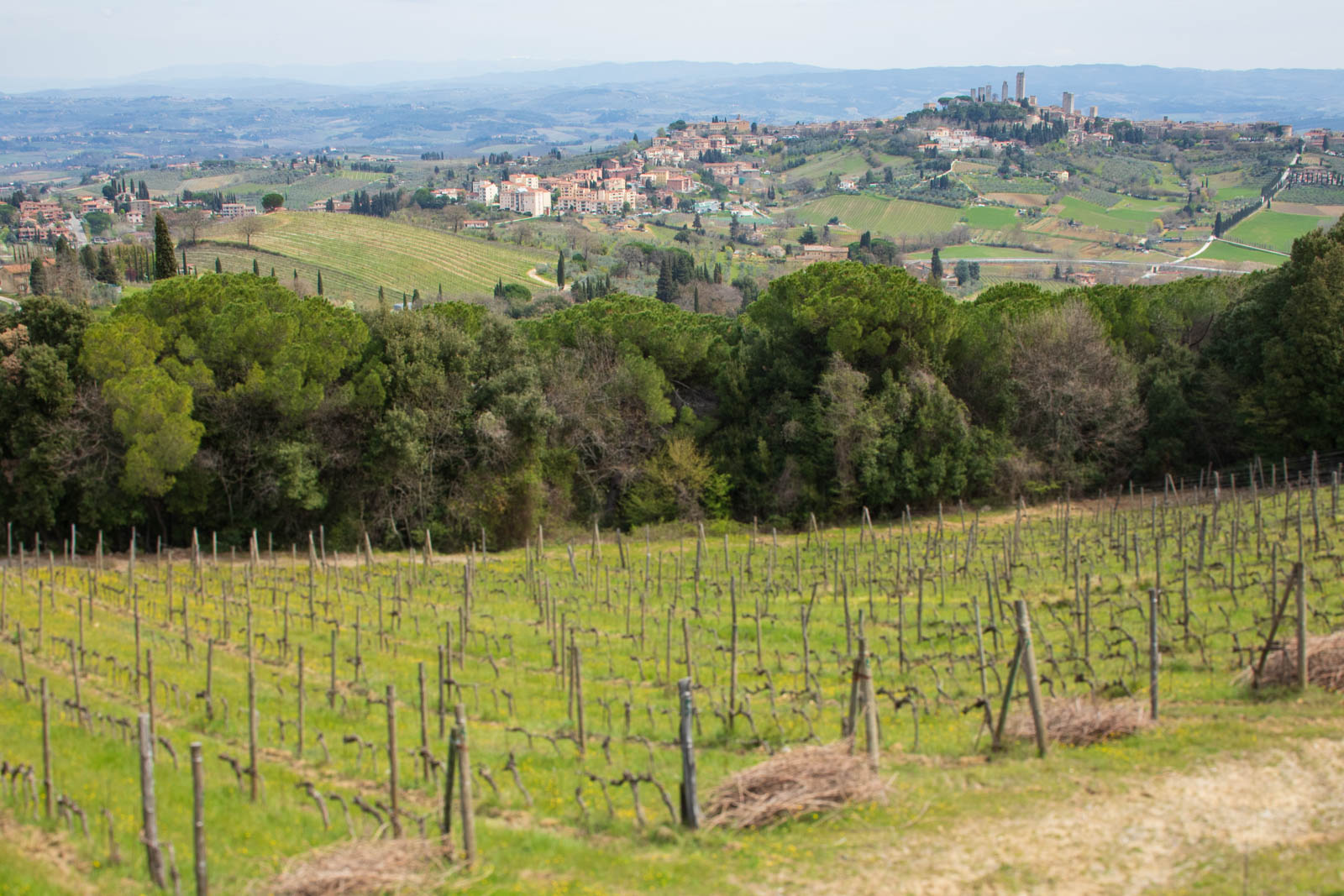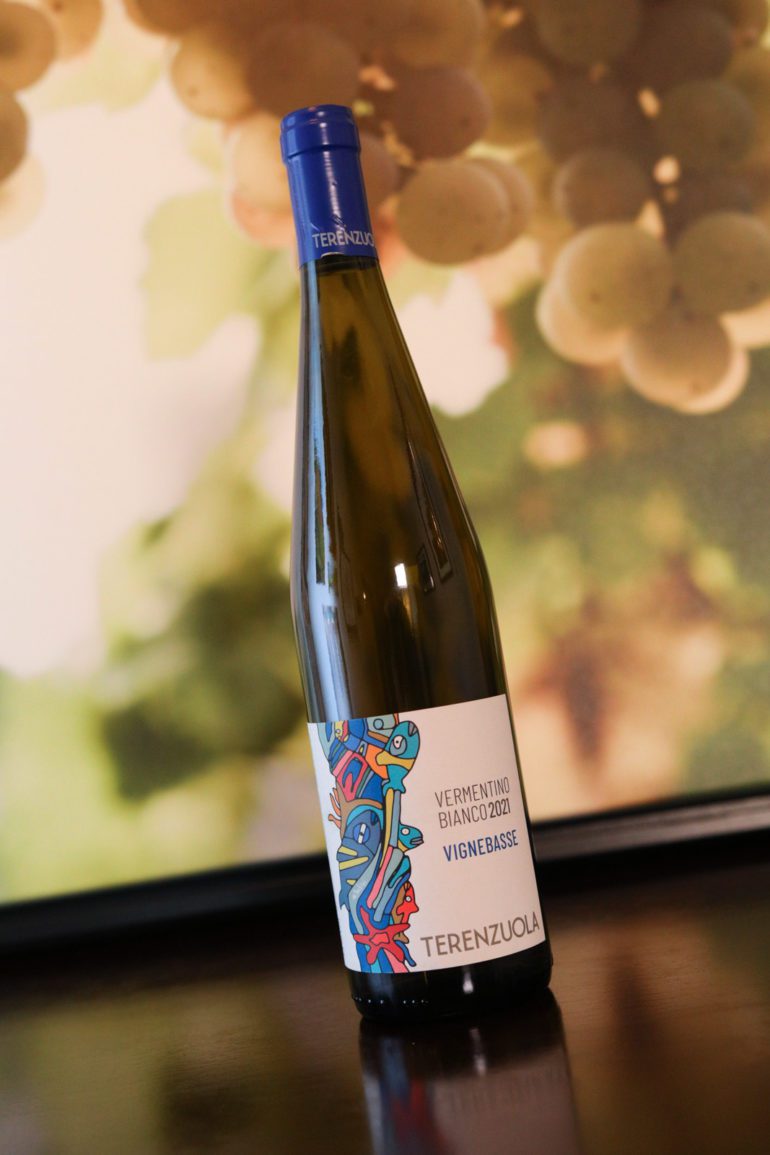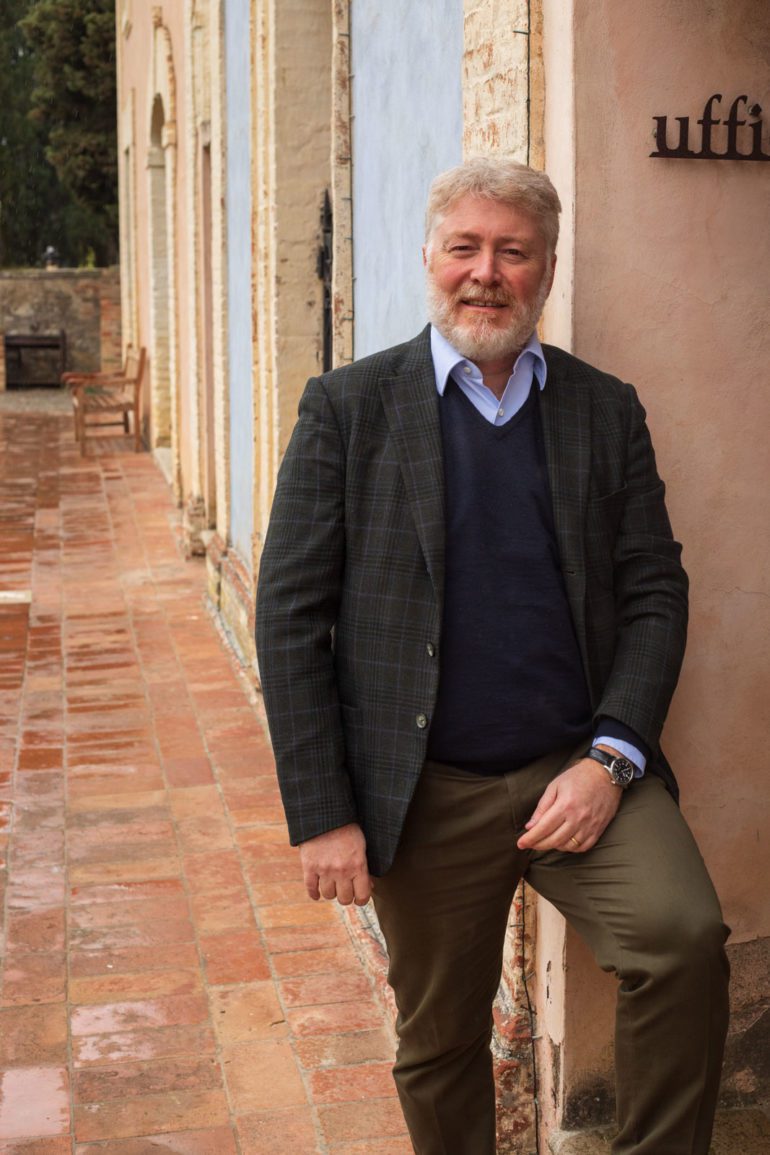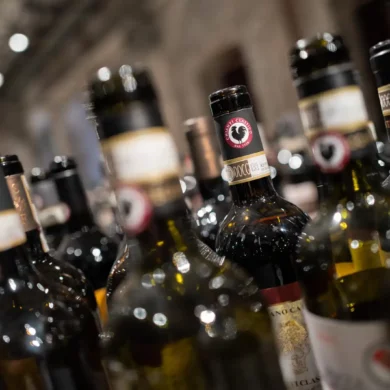It was the year of Tuscany at Opening a Bottle. One year ago, with my first post-COVID research trip scheduled and my sights set on Tuscany, I embarked on a tasting spree through the region’s wines. Much of this centered on Chianti Classico and Montalcino, where I was to be spending the most amount of time. But I was careful to also see what else was happening. With a stop in San Gimignano as well as numerous samples sent to me from beyond (word spreads fast about these trips), what emerged was an alternative narrative that I didn’t expect: the Red Sea of Sangiovese that is Tuscany is quietly making some of Italy’s most thrilling rosato, bianco and yes, even spumante. It is enough to have me eyeing another trip in the near future.
What follows is a year-end round-up of the most extraordinary of these Tuscan wines, completing my tasting report coverage — exclusive to paying subscribers of Opening a Bottle — which also covered:
- Chianti Classico Annata (Summer 2022)
- Chianti Classico Riserva (Summer 2022)
- Chianti Classico Gran Selezione (Summer 2022)
- Rosso di Montalcino (Fall 2022)
- Brunello di Montalcino (Fall 2022)
Each wine says something unique about this region’s history, terroir and/or potential. I hope you put them on your shopping list for future vintages.
Sparkling Wines
Poggerino “Millesimo” Spumante Rosé (2013)
I’ve already said plenty about this wine (★★★★★) both in this Wines to Admire review, as well as in choosing it as the year’s best wine. Still, I want to begin this tasting report with a shout-out to it, because it frames the narrative of the year perfectly: many of Tuscany’s absolute best wines are not in the DOCGs and they are certainly not “Super Tuscans” predicated on Bordeaux varieties. If wines like “Millesimo” are an integral part of Tuscan wine’s future, then we have exciting things ahead.
Fèlsina Millesimato Brut (2016)
One of Chianti’s most innovative wineries, Fèlsina has embraced varietal Sangiovese wines long before it was in fashion. Their damn-the-torpedos approach to the Chianti Classico disciplinare in the 1970s and 1980s proved to be prophetic, as the consorzio eventually came around to their way of thinking.
However, when it comes to the estate’s sparkling wine (★★★★ 3/4), third-generation winemaker Giovanni Poggiali blends 20% Pinot Noir and 20% Chardonnay in with 60% Sangiovese. With 48 months on the lees, there is an appealing intensity to this sparkling wine that registers as somewhat citric and nutty, with fleshy orchard fruit running throughout. It doesn’t have the pure Sangiovese identity of Poggerino’s sparkler, but it is a dazzling wine nonetheless.
Fèlsina also makes a lovely non-vintage wine with the same grape make-up, but less time on the lees.
White Wines
Montenidoli “Fiore” Vernaccia di San Gimignano (2020)
Montenidoli “Tradizionale” Vernaccia di San Gimignano (2020)
Montenidoli “Il Templare” Toscana Bianco (2016)
Elisabetta Fagiuoli is an icon of Tuscan wine. While she has been making wine in San Gimignano for more than 50 vintages — always with an eye toward preserving the biodiversity of her land — Fagiuoli told me that nature continues to teach her something new. That spirit of wonder is present in her wines, especially the three white wines I reviewed this year.
There are two Vernaccia di San Gimignano wines to know about: “Fiore” and “Tradizionale.” They differ in vinification, as “Fiore” (★★★★ 1/2) is an exquisitely refreshing take on the grape, and the most modern and simple in its technique: free-run juice into stainless steel. The wine’s radiance and minerality are so lovely that you might not notice the complexity of its citric tones, which I find to be a hallmark of good Vernaccia.
Meanwhile, “Tradizionale” (★★★★ 3/4) is a macerated white wine with nearly a week of skin contact. This lends texture and depth to the aromas, but the wine is not amber in color at all. Vernaccia simply doesn’t have the pigment of other Italian notable white grapes that undergo skin contact. I prefer “Tradizionale” because of its mysterious qualities, but both wines excel at the table.
“Il Templare” (★★★★ 3/4) is a whole other beast. Comprised of Vernaccia, Trebbiano and Malvasia, one could argue that it is among the most quintessential white wines in Tuscany for what it represents: three of the region’s most important grapes shining in equal measure. Vinified in oak barrels, it is richer, deeper and thrillingly complex with a duet of peach- and grapefruit-like fruit tones, a flush of floral notes, an anchor of lovely vanilla from the oak, and a creamy texture balanced by the tartness of its acidity. My only critique is that the wine wasn’t as exciting on a second night open.
Il Colombaio di Santachiara “L’Albereta” Vernaccia di San Gimignano Riserva (2019)
One of Montenidoli’s neighbors, Il Colombaio di Santachiara also makes a series of wonderful Vernaccia di San Gimignano wines, with the best being “L’Albereta.” I sampled the 2019 (★★★★ 3/4) this summer, which carried the stonefruit and lime citrus notes that are the aromatic hallmarks of the grape, but also a unique fruity bass note that I could only relate to sour cherries — unusual for a white. “One foot in Sancerre, the other in Chablis” I wrote in my notes trying to describe the wine’s unique texture. That came from the focused crispness and precision resembling the former, and the caressing minerality of the latter on the finish.
This is a highly versatile food wine that benefits with a little age, so don’t be too concerned about the latest vintage.
Terenzuola “Vignebasse” Colli di Luni Vermentino (2021)
Terenzuola “Permano” Costa Toscana Vermentino (2020)
I’ve been waiting for this moment for a long time: the chance to board the Vermentino band wagon in earnest. But for all the attempts (including many with highly regarded producers), I just hadn’t found one to make me passionate. Punta Crena’s Pigato was probably as close as I came.
And then in late spring, a box of wines from Terenzuola arrived at my office.
This fascinating winery located in the Colli di Luni appellation of the Tuscan coast seems to specialize in pure, rollicking fun wines from old-vine heroic vineyards near the coast. As I dug into the wines, I quickly realized this was one of Tuscany’s most exciting producers. The opening salvo for me was the 2021 “Vignebasse” Colli di Luni Vermentino (★★★★ 3/4), which nicely demonstrated Vermentino’s signature aromas of crisp melon and pineapple. However, I found the wine was even more enjoyable served cold, where it demanded little but easy pop-n-pour participation.
Meanwhile, the 2020 “Permano” Costa Toscana (★★★★★) nearly landed on the Top 12 Wines of 2022 list, and perhaps can lay claim to getting me to board the Vermentino train once and for all. Made from Vermentino vines planted in 1938 on the terraced slopes of Apuane Alps (as well as some old-vine Trebbiano), this stunningly expressive wine spends three weeks in contact with the skins before it is aged on the lees in 10hL clay vessels. I was reminded of the seriousness of German Riesling (perhaps it was the beeswax-like aromas) but also the jovial character of Fiano. But complex layers of fruit, particularly a striking pineapple-like tone — as well as a minty spiciness — made this wine feel like something else entirely. A mineral bite on the finish nicely brings each sip to a conclusion, yet asks for another.
Fèlsina “I Sistri” Chardonnay Toscana (2020)
Sometimes I think that a life in wine is all about slaying your biases. Going to Tuscany, I was sure that if I crossed paths with a Chardonnay, it would underwhelm me. Why is that? Perhaps its all the red Bordeaux-variety duds I’ve tasted from Tuscany that had me in the mood to write off all international grapes from the region. But when you tour the mountains of Chianti in a springtime rainstorm — and see how cool and brisk the climate can be — well, why not Chardonnay?
And why not Fèlsina as the winery to make it? As I noted with his vintage metodo classico spumante above, Giovanni Poggiali is an exceptionally talented winemaker whose lengthy experience now translates into remarkable consistency. “I Sistri” (★★★★ 3/4) comes from Chardonnay vines that have been grafted onto Trebbiano Toscana roots, according to Chiara Leonini, the winery’s export manager, who lead me through my tasting. For me, Chardonnay has to have some subtlety, otherwise its personality traits tend to speak too loudly. Here, the restraint of “I Sistri” comes from its gossamer texture. The acidity is far from slack, but it is not aggressive or enamel-stripping either. Of course, playing in the Chardonnay space is highly competitive, and while I wouldn’t say this wine is a world-beater, it sure was a delicious change of pace after days upon days of Sangiovese tasting. It is certainly worth seeking out.
Rosé Wines
Sesti Toscana Rosato (2021)
Makers of the first rosato in Tuscany, the Sesti family continues to find success with this saignée method version of Sangiovese. While visiting the secluded Montalcino estate in April, I tasted the 2021 Rosato (★★★★ 3/4), encountering its strawberry and lemon-pith aromas, pitch-perfect acidity and lovely silkiness on the palate. Elisa Sesti told me that the genesis of the rosato was initially to have something light to drink in the summer (ever had Brunello on a hot day?). Their vineyards are aided by surrounding forest which helps to keep them cool at night, creating a diurnal temperature swing that is vital to success with Sangiovese. “Spectacular” is how I described the finish … not something I ascribe often to rosé.
Poggerino “Aurora” Toscana Rosato (2021)
I know, I know: here I go again with Poggerino, but I would be remiss to not include “Aurora,” Piero Lanza’s remarkable rosato. After tasting his stunning sparkler, we shifted gears to the 2021 “Aurora” (★★★★ 3/4). I had recently been enjoying the 2019 “Aurora” at home, and while most rosé wines have a short shelf-life, this one certainly does not. It is textural, silky and carries a big and generous personality, while maintaining a great tightrope of citric acidity that is the hallmark of Sangiovese. It has little to no tannin, and with superb endurance on the finish, too.
Tenuta di Lilliano “Montenello” Toscana Rosato (2020)
I was directed toward Tenuta di Lilliano by my aunt and uncle, who are retired and often spend months at a time renting a small place near Arezzo. They raved about Lilliano’s “Montenello” Rosato, so I added them to my itinerary and paid a visit. It was a worthwhile stop for sure. The tasting began with the 2020 “Montenello” (★★★★ 1/2), which seemed to carry more intensity of strawberry-like fruit, a twist of mint, and heightened savory elements over most Tuscan rosato. This depth is nicely countered by the wine’s megawatt brightness, which lends it considerable persistence.
Captions
(Top to bottom; all photos ©Kevin Day/Opening a Bottle unless otherwise noted): View of San Gimignano from Montenidoli’s vineyards; the view from Poggerino in Radda in Chianti; ode to falcons and wine bottles at Montenidoli; Alessio Cecchini, assistant winemaker at Montenidoli; 2019 Montenidoli “Tradizionale” Vernaccia di San Gimignano; blooming flowers at Montenidoli; 2019 Il Colombaio di Santachiara “L’Albereta” Vernaccia di San Gimignano Riserva; Giotto’s Bell Tower in Florence; 2021 Terenzuola “Vignebasse” Colli di Luni Vermentino; Fèlsina winemaker Giovanni Poggiali; Terenzuola winemaker Ivan Giuliani (©Terenzuola); 2020 Terenzuola “Permano” Costa Toscana Vermentino; the Sesti estate; winemaker Elisa Sesti.
Note: Some of these wines were provided as samples either by the winery during a visit or submitted by a press agency. Some travel was also subsidized by local consortiums. Learn more about our editorial policy.

















